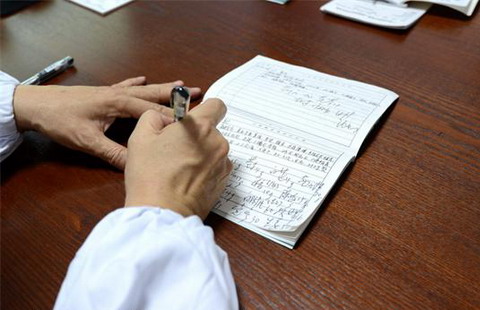Battling the language barrier
Updated: 2015-04-10 11:48
By Niu Yue(China Daily USA)
|
||||||||
More than 20,000 Chinese children are 'ELLs' - English Language Learners - in New York City's public-school system. The program's goal: improve the childrens' English-language proficiency so they can advance in school, reports NIU YUE in New York.
Every school day, 22,170 Chinese students in New York City struggle. Susa, 8, is one of them.
"Dan have 2 photo albums. Each photo...," she paused after reading aloud the first sentence of a math problem. "[Each photo] album has 8 page. Dan can fit 4 picture on each page. How many pictures can Dan fit in the album?"
Susan, not her real name, attends PS 001 in Chinatown, where she and 60 other students at the school are being tutored by 20 Asian teachers to take a statewide math test in mid-April, which will determine their placement in the city's public schools.
All of them are "ELLs" - English Language Learners - who do not speak English at home and score below proficient on English assessments when they enter the city's school system.
There are about 150,000 ELLs in the public schools, and among them they speak some 140 languages. Hispanics account for the largest percentage - 61.8 percent, or 96,163. Chinese children are second at 14.2 percent. Bedsides their language problem, what is shared by all is a lack of parental support and low family income.
There is a high concentration of ELLs children in some neighborhoods, especially in Manhattan's Chinatown. At PS001, 67 percent of the students are Asian, and 36 percent of them do not have adequate proficiency in English, according to data from the city's education department.
ELLs children often underperform compared with their English-proficient peers. The city's high-school graduation rate is 68.1 percent for those with proficient English and 32.5 percent for ELLs students.
"From what I see in teaching kids and my own experiences, they [Chinese students] grow up in households in environments where the primary language is not English," said Anne Lee, director of development at Apex for Youth. "We do find a lot of their parents are restaurant workers and home health-aid workers. They are jobs that don't require much English, but a lot of hours so, parents hardly spend enough time with their children."
Apex for Youth is a non-profit organization that offers free tutoring to New York City public school children and has been a partner with PS001 on its tutoring program for years.
"They (children) learn, they learn, and they fail, they fail. Being an immigrant doesn't mean they will make it. Being born here doesn't mean they will be smart," said David Chen, president of the New York-based Chinese-American Planning Council (CPC).

 National festival underway with cherry blossoms
National festival underway with cherry blossoms
 Hillary Clinton's China connections
Hillary Clinton's China connections
 Bicycle-friendly Hainan hotels cater to riders
Bicycle-friendly Hainan hotels cater to riders Stars dazzle at 2015 MTV Movie Awards
Stars dazzle at 2015 MTV Movie Awards
 Top 10 best airlines in the world
Top 10 best airlines in the world
 Can doctors' illegible handwriting be justified?
Can doctors' illegible handwriting be justified?
 Take home as many as you like
Take home as many as you like
 Weifang holds kite fair
Weifang holds kite fair
Most Viewed
Editor's Picks

|

|

|

|

|

|
Today's Top News
Hilary Clinton launches presidential campaign
'No room' for election China-bashing: US politicians
AVIC buys Calif. aviation parts distributor
Protests across Brazil seek ouster of president
US backs China's campaign to hunt down fugitives
Obama, Castro hold historic meeting, vow to turn the page
Living Buddha talks Tibet
Consulate general praises C-100 on 25th anniversary
US Weekly

|

|







